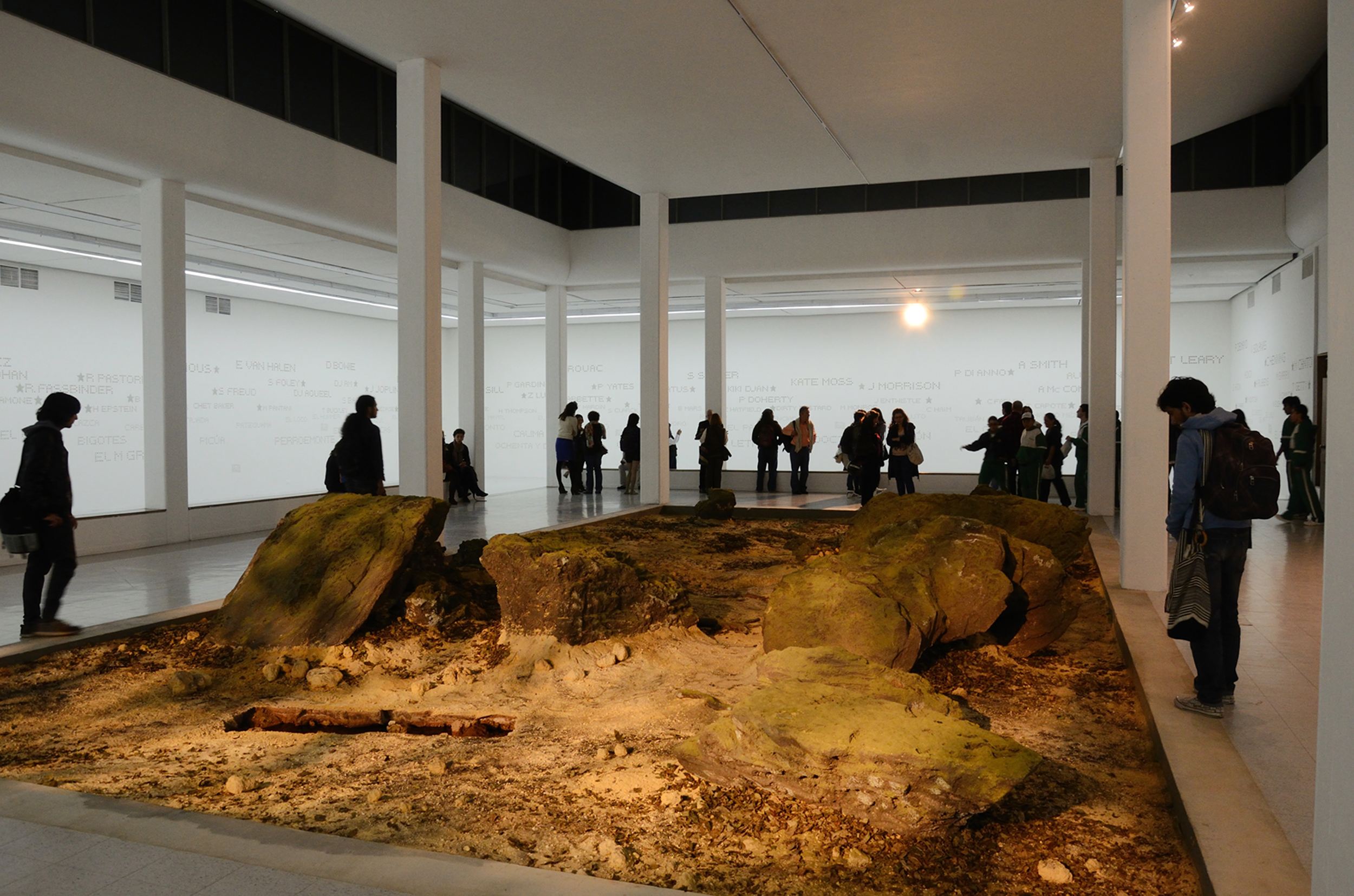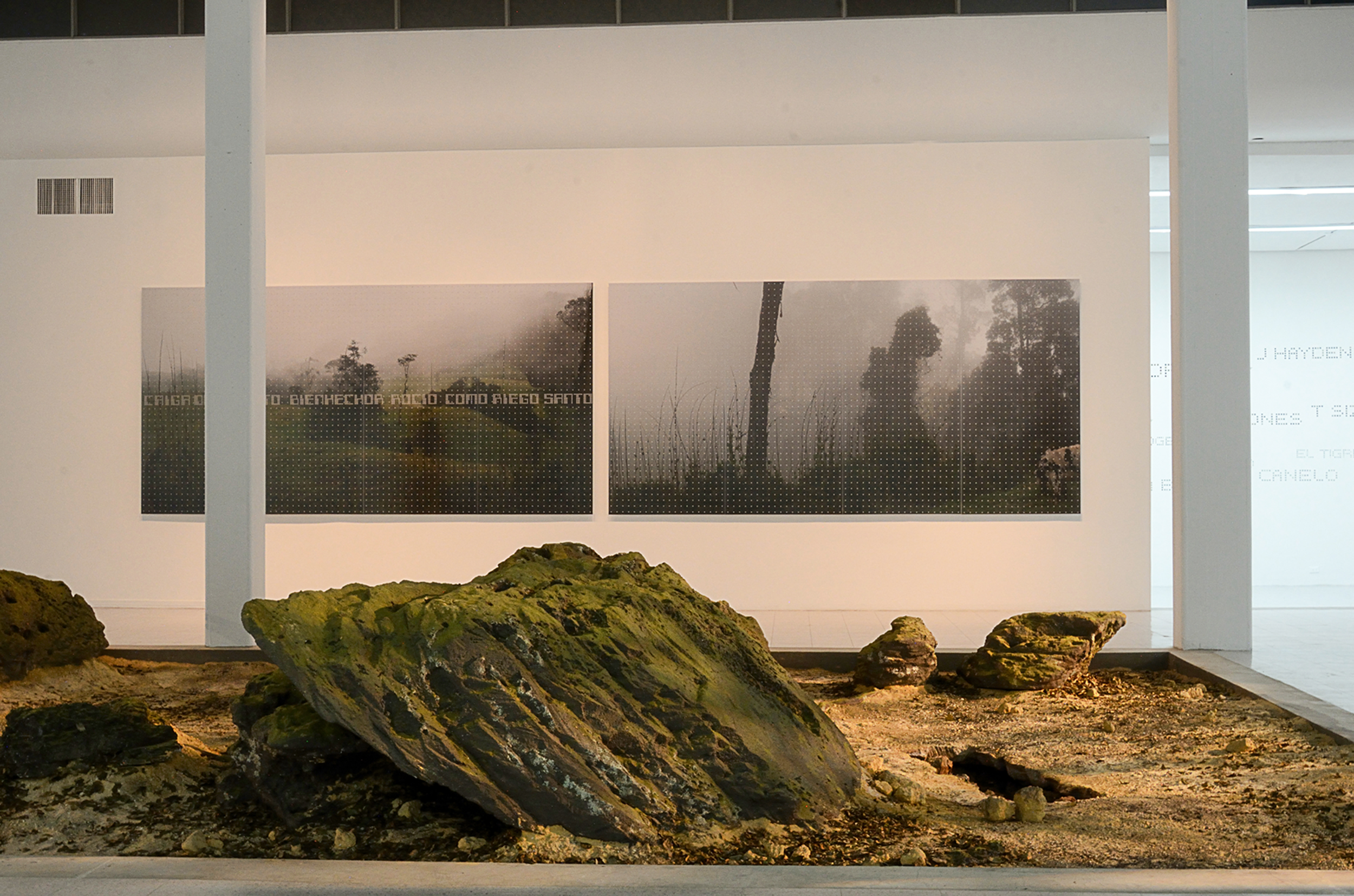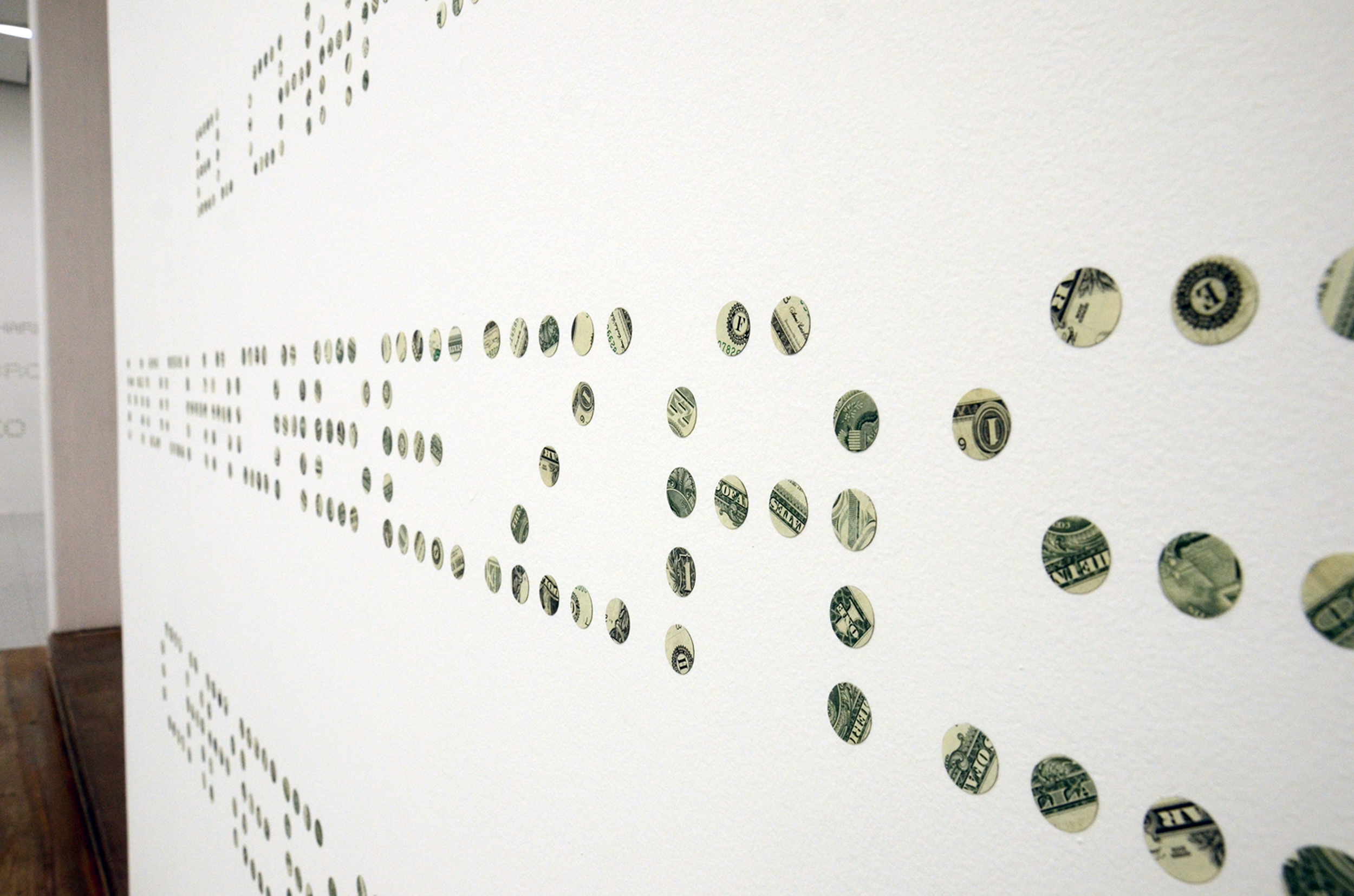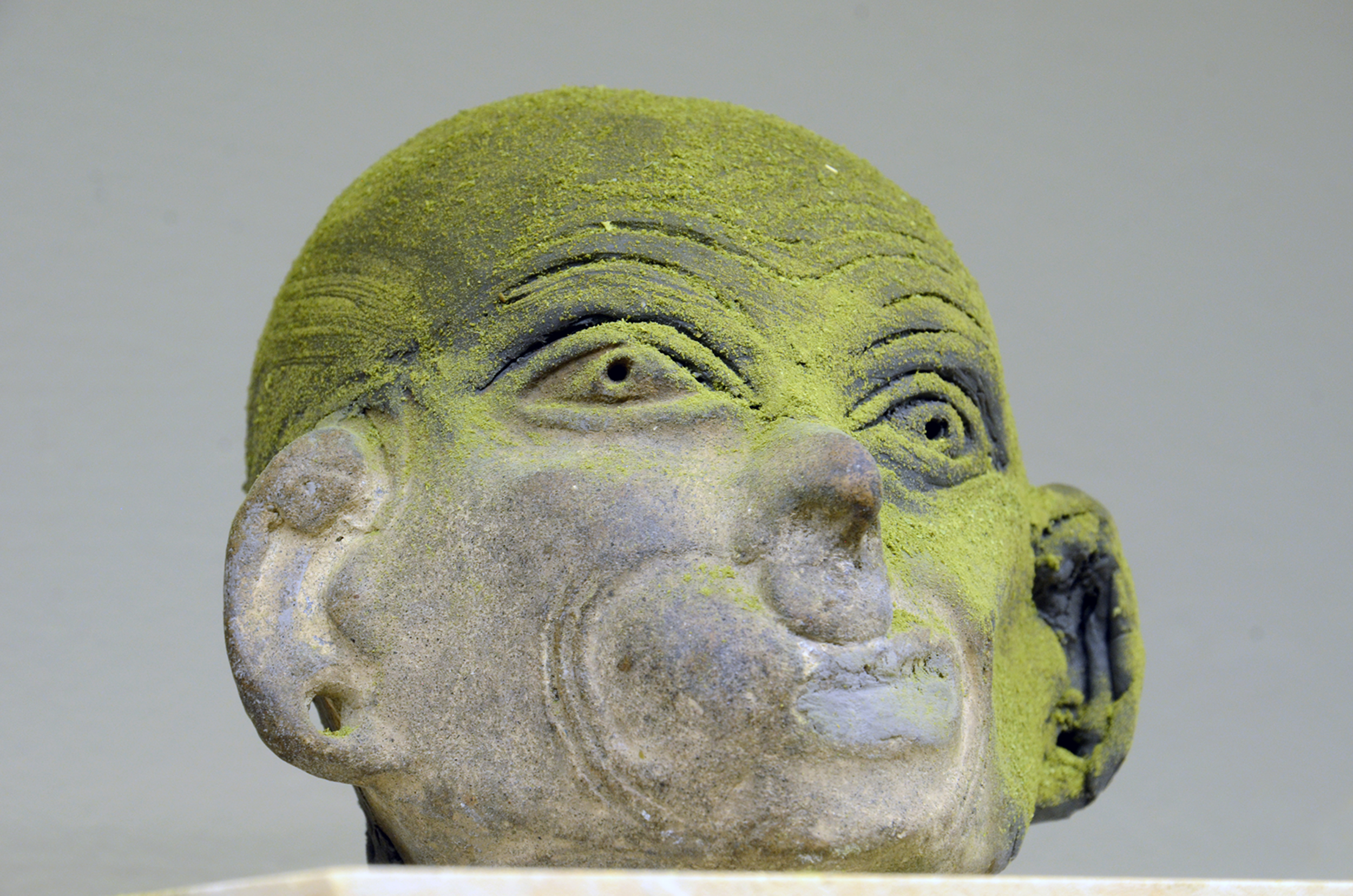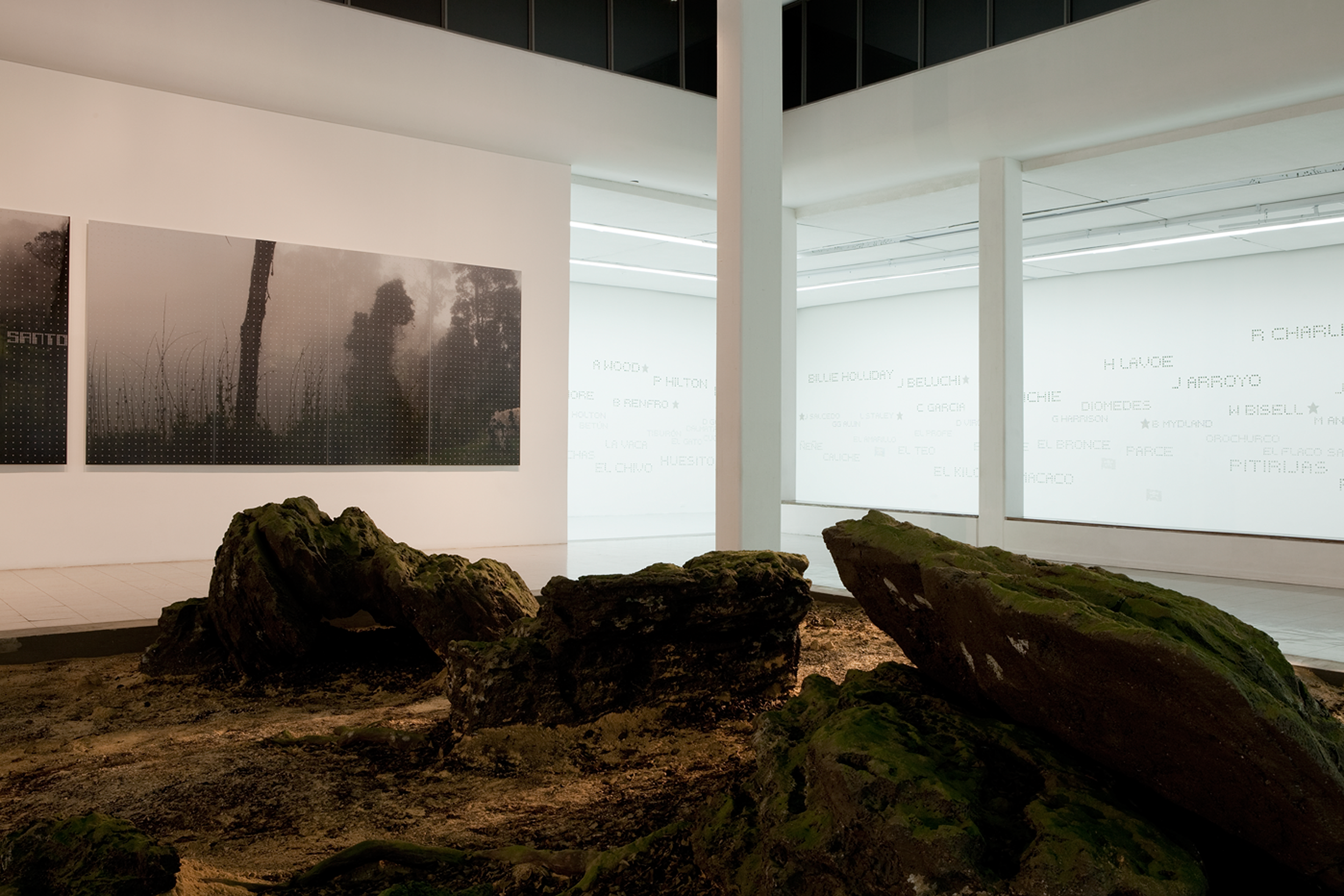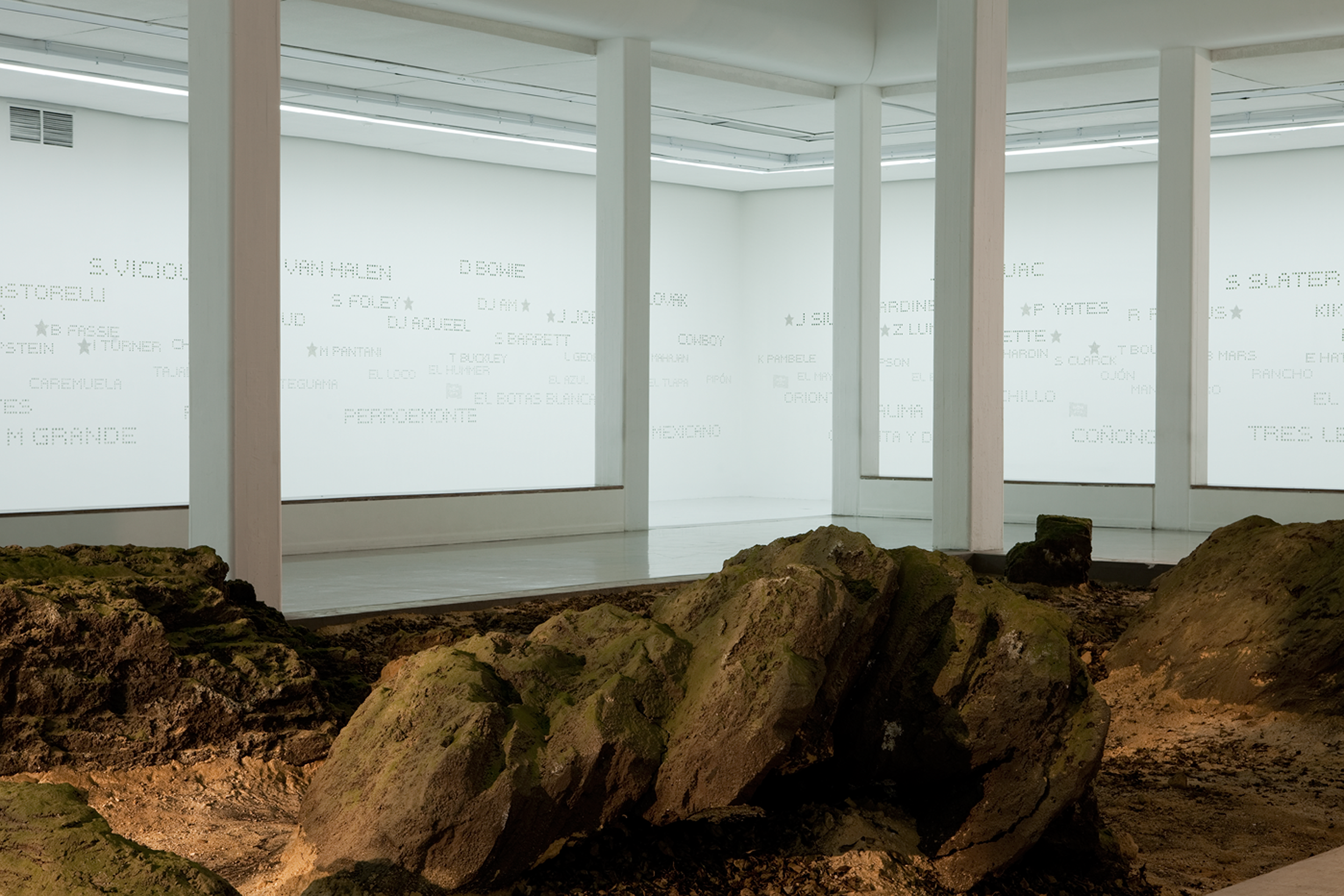Proyecto comisionado por el Museo de Arte de la Universidad Nacional de Colombia.
Curaduría: María Belén Sáez de Ibarra.
2012
La Cosecha
Esta instalación señala las innumerables víctimas de la violencia en la guerra sustentada por el narcotráfico.
El camino corto (Instalación)
Los textos configuran una especie de paisaje en donde la línea de horizonte divide el espacio de los muros en dos partes. Arriba el cielo, nombres de personalidades famosas por su adicción a las drogas, escritos en recortes de hoja de coca. Abajo la tierra, alias de narcotraficantes de Colombia y México escritos en recortes de dólar.
Los nombres de los famosos internacionales con problemas de consumo de drogas aparecen en el mismo paisaje humano que los alias de los narcotraficantes más notorios y sanguinarios, estos queriendo ser ricos enseguida y aquellos queriendo ser felices instantáneamente. Los consumidores famosos en el mismo plano de culpabilidad que los narcotraficantes.
Territorio de decepción
Esta instalación señala el territorio rural colombiano en donde la producción de cocaína ha llevado al desplazamiento de las comunidades campesinas, a la desertificación de las tierras, al envenenamiento de las aguas por las aspersiones de glifosato, a la guerra, a los campos minados y a la muerte. En esta instalación todos los elementos son falsos exceptuando las hojas de coca y el mambe que cubre las piedras como musgo.
El Túnel del Tiempo
Un fragmento arqueológico de la cultura Tumaco (siglo IX ) representa un mambeador de coca, nos remite a su uso ancestral, que en esta instalación esta acompañado de varias cabezas de rasgos indígenas. Modeladas en pasta de maíz con pinceladas de hiel animal en las mandíbulas inferiores, especies de mordazas que expresan la amargura que ha traído en ultima instancia los cultivos ilícitos de la coca, los desplazamientos y la guerra.
La otra parte del túnel del tiempo es el video economías intervenidas donde de un directorio empresarial salen hojas de coca y a la vez recibe otras cubiertas de oro.
Territorio de Decepción
En esta escenografía hiperrealista de un drama sin aparentes actores, el papel protagónico lo tiene indudablemente la planta de coca. En medio de todos esos elementos falsos: la piedras, los líquenes, los musgos, los troncos, el terreno mismo, el agua en la fosa, la luz solar, los sonidos de insectos y anfibios, se destaca como presencia real cargada de significado la coca. Sus hojas hacen la hojarasca, en forma de mambe hacen el musgo sobre las rocas. La fosa de dimensiones humanas, como huella de un entierro furtivo está llena de extractos líquidos de hojas de coca, ella nos remite a la violencia y a la muerte, la cara decepcionante del gran negocio de las drogas.
Miguel Ángel Rojas
The Short Way, 2013
Project commissioned by the National University of Colombia’s Museum of Art
Curator: María Belén Sáenz de Ibarra
The Short Way is a project that the artist did specifically for the National University of Colombia.
We are before two sacred entities: the coca leaf and money, in the form of a dollar bill. These installations introduce us to the tension generated by the clash of two cultures and two ways of inhabiting the world. When they find themselves in a blind spot, one of non-space and non-time, on planes of existence that seek an impossible balance, they generate shock waves that mobilize ambiguous ways of relating that result in violence, pain, destruction of the environment and ways of life, and the destruction of life itself.
This is the annihilation of one culture by another. Might there be another way, perhaps a longer one? The question has no answer, but the short way leads to the self-destruction of the spirit of all possible worlds.
The short way is the easy search for wealth, beauty, power, happiness, pleasure, a solution to all social conflicts, to how we handle cultural differences. A shortcut. It may be an illegal route, but also one that is full of socially acceptable forms, such as war, or spurious financial gains from the illegal trafficking that silences all voices in order to buy the complicit silence of history, of the moment in danger, of the present time.
Curator / María Belén Sáez de Ibarra
The Harvest
This installation alludes to the countless victims of violence in the war upheld by drug trafficking.
The Short Way (installation)
The texts form a kind of landscape wherein the horizon line divides the wall space into two parts. At the top, the sky, names of famous individuals known for their drug addictions written on coca-leaf cutouts. At the bottom, the land, and the pseudonyms of Colombian and Mexican drug traffickers written on cutouts from dollar bills.
The names of international celebrities with drug addictions appear in the same human landscape as the pseudonyms of the most notorious and brutal drug traffickers, the latter of whom desire instant wealth, and the former, instant gratification. Famous drug consumers are placed on the same level of guilt as the drug traffickers.
Territory of Deception
This installation alludes to rural Colombia, where cocaine production has led to the displacement of rural communities, lands poisoned by aerial spraying of glyphosate, war, landmines, and death. In this installation, all of the elements are false, except for the coca leaves and the mambe or ypadu made from coca leaves.
The use of coca leaves as the only real element alludes to the Colombian fields where illegal crops have brought not financial prosperity but rather the displacement of the rural population, the desertification of land through overuse of toxins such as glysophate (an irrational insistence upon which will eventually end world consumption of the crop), and war.
Zone of Power
This is an area defined by bronze stars embedded in the gallery floor. As indicated by the title, it is the counterpart to Territory of Deception. The star has no real significance, but it has become a symbol of values, institutions, states, and authorities around the world. In those places of power, decisions are made that may have positive or negative effects on human lives and the environment. The star as a symbol of the institution.
Miguel Ángel Rojas
Traslated by Michelle Suderman
